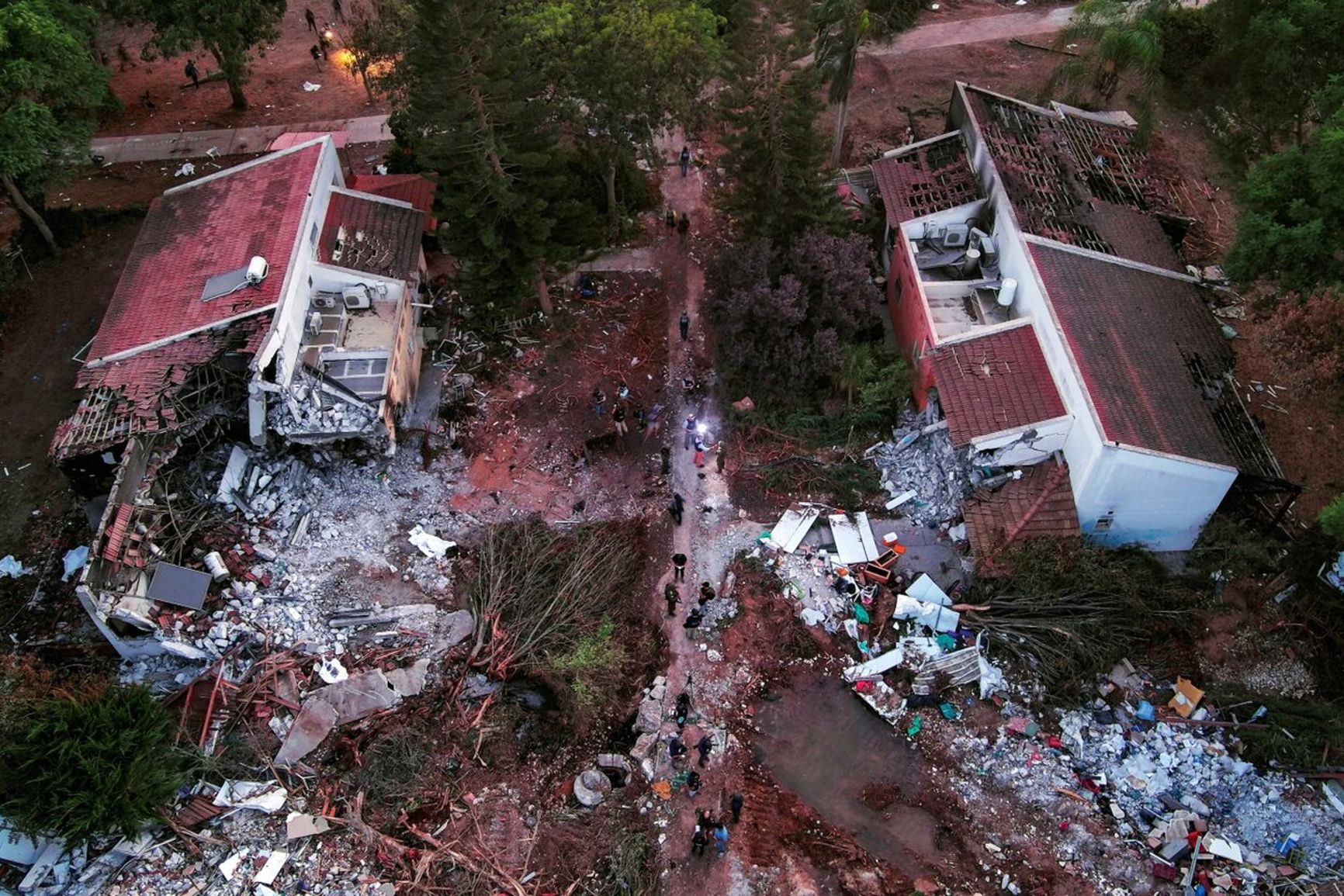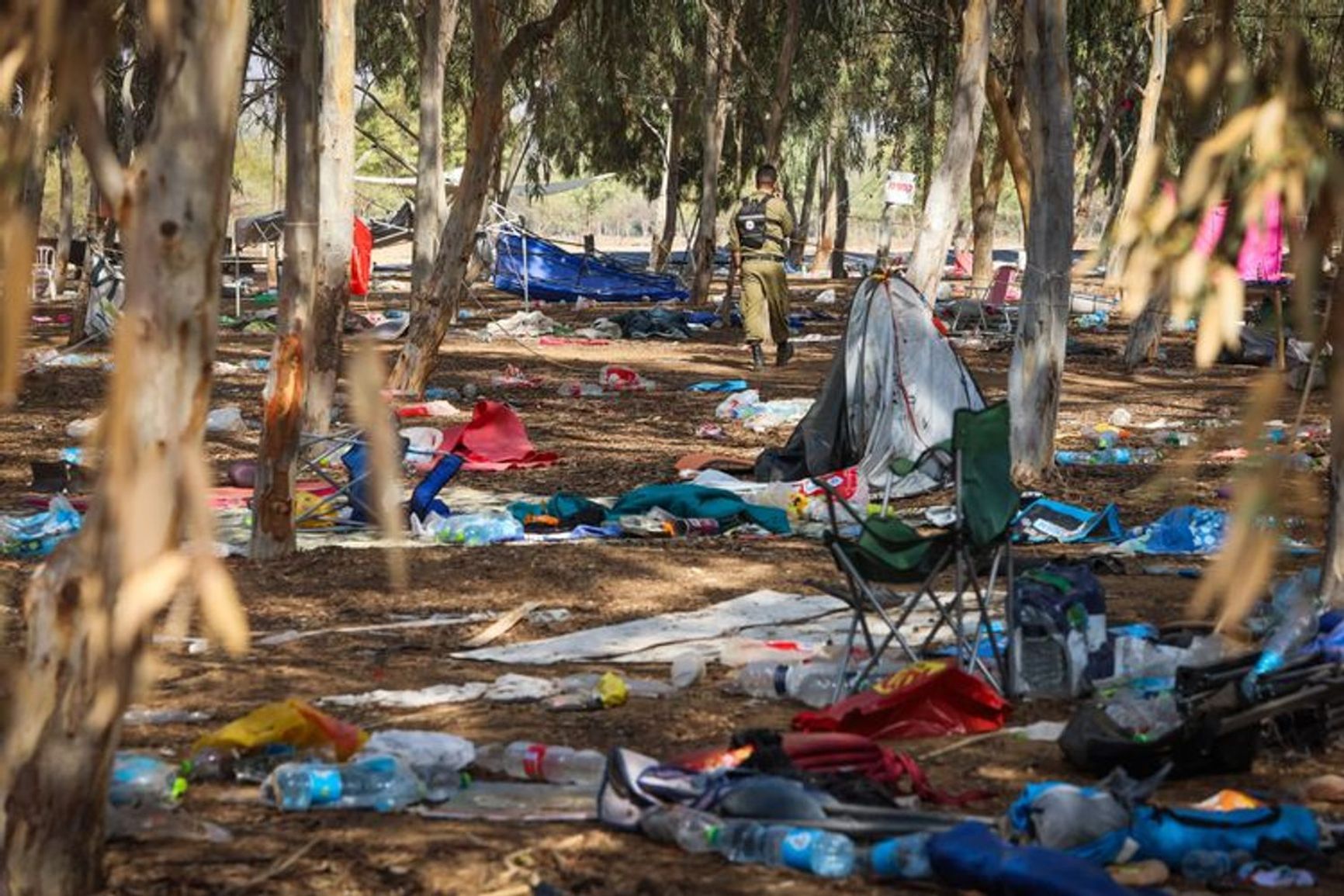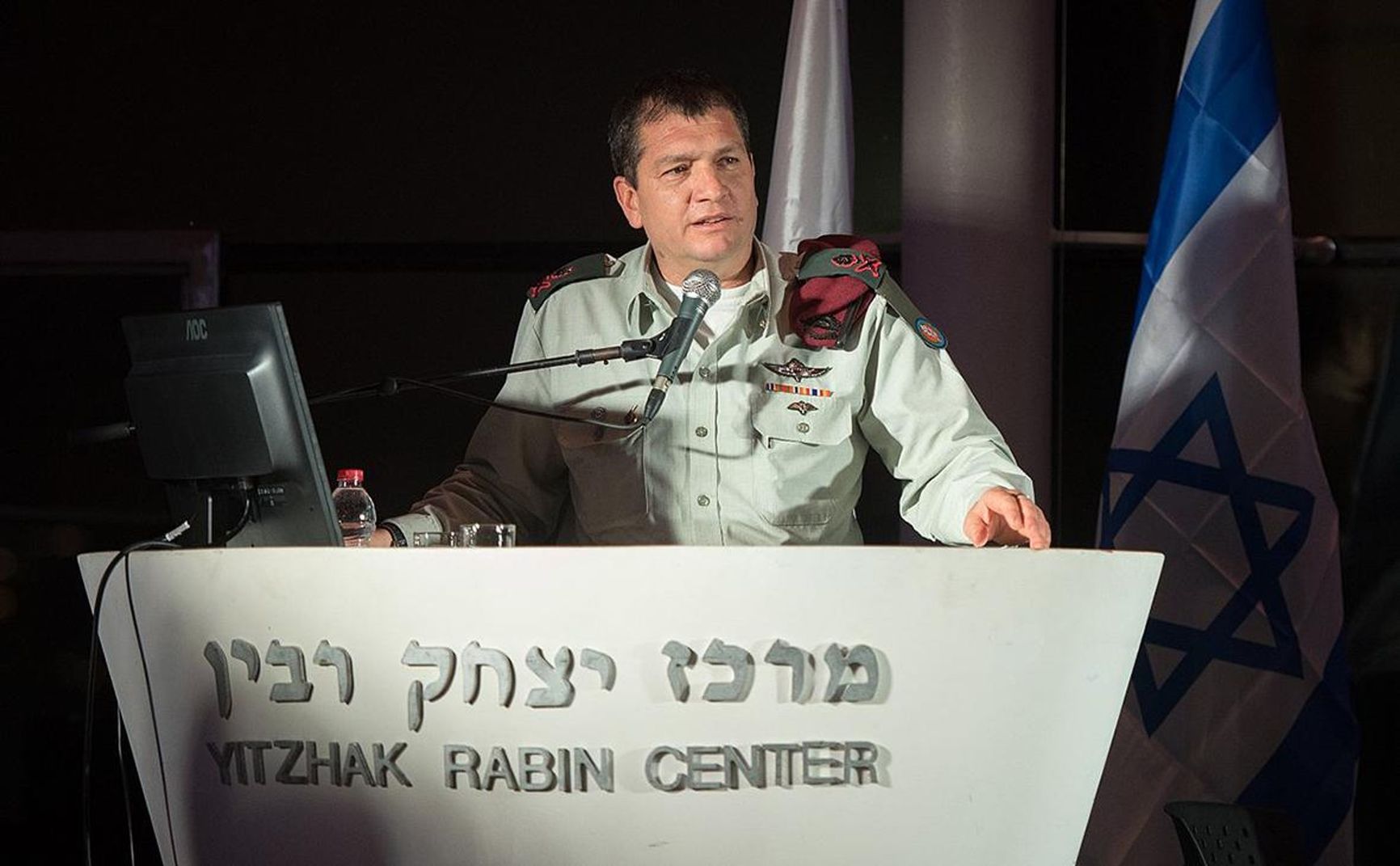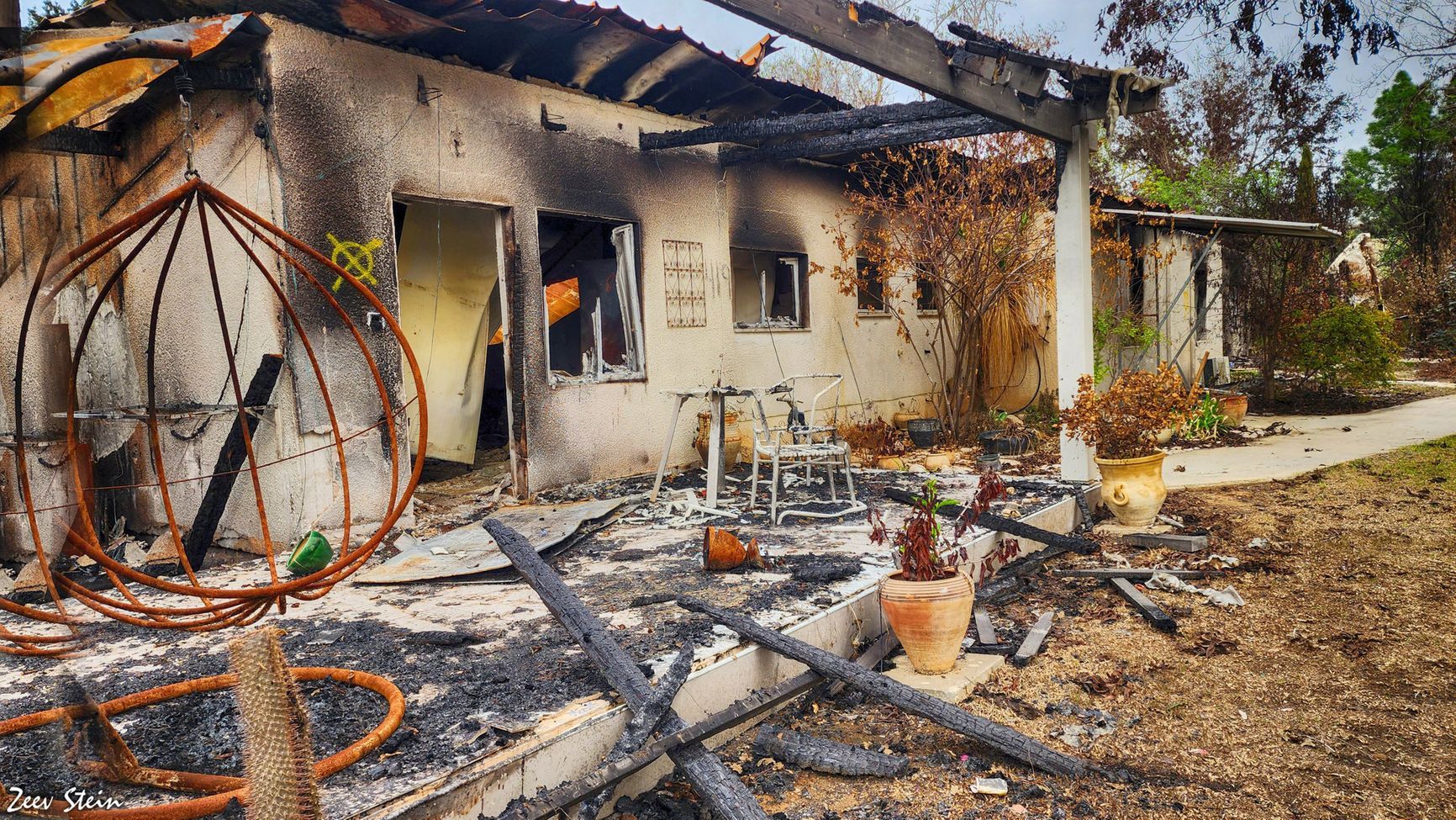

In late February, the Israel Defense Forces (IDF) began releasing reports from internal investigations into the failures that allowed the Hamas terrorists to carry out the attacks of October 7, 2023. At the same time, the Israel Security Agency (Shin Bet) published the findings of its own inquiry. Although intelligence had detected suspicious activity in the Gaza Strip just hours before the attack, Israeli authorities did not treat this development as a serious threat — similar movements by Hamas fighters had been observed in the past, and those had not led to major assaults. Israeli intelligence agencies also lacked sources inside Hamas assault units and within the leadership of the group’s military wing. Another critical error was the decision to station the command posts of the divisions responsible for defending the south all in one location.
Content
No one expected the attack
Hamas prepares for attack
The situation on the morning of October 7
Where was the IDF?
No longer a small, smart army?
On October 7, 2023, at around 3:30 p.m., Yasmin Porat stepped out of Pesi Cohen’s house in Kibbutz Be’eri, escorted by several Hamas militants. Inside, 14 more hostages and several dozen fighters remained. The terrorists had not attempted to take the hostages to Gaza, believing the routes to the border had already been cut off — more than eight hours had passed since they seized the kibbutz. They forced Yasmin to call the police and demand safe passage to Gaza along with the hostages. Unbeknownst to them, there was no need — withdrawal was still possible, and they could have left the area without encountering resistance. An hour later, the situation remained unchanged. Neither Yasmin nor the militants could understand why the Israeli army had yet to move in to retake the kibbutz. Police special forces unit Yamam didn’t arrive at Pesi Cohen’s house until 4:45 p.m.
Meanwhile, outside the gates of the kibbutz, forces from the 99th Reserve Infantry Division had assembled under the command of Brigadier General Barak Hiram. He sent in small teams to evacuate residents and the wounded but made no attempt to launch a full assault. At one point, according to eyewitnesses, a dispute broke out between Hiram and retired Major General Israel Ziv, who on his own initiative had driven to the Gaza border from Tel Aviv earlier that morning. Ziv, a former commander of the Gaza Division and former head of the IDF Operations Directorate, urged Hiram to deploy all available forces to retake the kibbutz.

In Be’eri, the terrorists killed one in every ten residents
Ziv proposed that Hiram split his forces into two assault teams and personally lead one of them. Hiram, however, argued that he lacked the necessary intelligence to initiate an attack. A full-scale operation to retake Be’eri from the terrorists did not begin until nearly 6:00 p.m.
On October 7, 101 residents of Kibbutz Be’eri were killed. Twenty-nine were abducted and taken to Gaza. A total of 150 homes were destroyed and set on fire. Of the 15 hostages held in Pesi Cohen’s house, 13 were killed, including two children. One year later, Barak Hiram was appointed commander of the Gaza Division.
Be’eri was not the only location where the IDF failed to protect civilians. In the small kibbutz of Nir Oz, located on the Gaza border, troops arrived only after the last Hamas militant had left. By then, one in four residents had either been killed or abducted.

The Nova music festival after the Hamas attack
The Hamas terrorists had no knowledge of the Nova music festival near Kibbutz Re’im and ended up there by accident after taking a wrong turn, arriving a full hour and a half after the attack began. Yet the army managed to get there only after the terrorists had shot and killed 378 people and abducted 44. An investigation later revealed that the IDF had simply forgotten about the festival, which had been approved by both the police and the military and was being held in full compliance with all regulations.
The army arrived at the music festival only after the terrorists had shot 378 people and abducted 44
In its main investigation, the Israel Defense Forces are trying to answer four questions: what threat perception regarding Hamas guided the Israeli security establishment; why the IDF had no intelligence on the terrorists’ plans; what happened on the morning of October 7; and why the army failed to protect the border and prevent the mass killing and abduction of civilians.
No one expected the attack
“Hamas doesn’t want war and isn’t preparing for a large-scale assault” — this was the core assumption that guided the Israeli security services in recent years, especially after an underground barrier was constructed along the Gaza border to protect Israel from infiltration via tunnel. According to Israel’s political and military leadership, the main threat to the Jewish state came from Iran and Lebanese Hezbollah. And if Hamas were to plan an attack, it would more likely come from the West Bank, home to numerous Jewish settlements and offering much easier access to Israeli territory.
This assumption — or “concept,” as it is known in Israel — became especially entrenched after Operation Guardian of the Walls in 2021. At the time, apart from rocket fire, Hamas had made only cautious attempts to cross the border, all of which were successfully repelled by the Israeli military. For Hamas, however, Operation Guardian of the Walls and the accompanying unrest in cities with mixed Arab-Jewish populations became the final proof that the IDF was not as invincible as it seemed, and that Israel’s Arab citizens were just waiting for a signal to join the terrorists’ assault from within. Fortunately for Israel, Hamas turned out to be only partially right, and its hopes that a civil war would break out in Israel after October 7 did not come to pass.
The confidence that Gaza posed the least threat to Israel led to minimal forces being deployed to defend that border. However, in an interview with The Insider, retired Major General Israel Ziv points to another reason why the attack was not repelled in the first hours. According to Ziv, one of the military’s fatal mistakes was that the command, “in the interest of saving resources,” placed the headquarters of the Gaza Division and two regional brigades in one location — at the Re’im base, right on the border with Gaza.
As a result, the sudden attack incapacitated three command posts responsible for the defense of the southern part of the country, completely severing the chain of command and leaving the IDF virtually blind. Consequently, the Southern Command headquarters was left without an accurate picture of what was happening on the border and had to communicate directly with mid- and lower-level commanders.
“The army was not just unprepared for a large-scale attack from Gaza — it didn’t even attempt to prepare for it. The word ‘war’ simply didn’t exist in the command’s vocabulary when it came to that border. All the drills conducted there were designed to prepare forces for isolated terrorist attacks. And the army was completely complacent,” Ziv asserts.
As highlighted in the published IDF report, the concept that Hamas was allegedly not interested in a full-scale war was not only believed by the military command, but also by the country’s political leadership. The government and security services considered it correct not to pursue a “solution to the conflict,” but rather to “manage the conflict.” Simply put, Hamas was viewed as an enemy, but the strategy was to create conditions for prolonged periods of calm rather than to prepare for a fight.
The concept that Hamas was allegedly not interested in a full-scale war was believed not only by the army command but also by the country’s political leadership
The army cannot investigate the actions of the political leadership, but open sources indicate that the Israeli government, as an adherent to the aforementioned “concept,” contributed to strengthening Hamas, including by helping Qatar financially support the terrorist movement. According to former close associates of Benjamin Netanyahu, the main reason for this approach was the desire to weaken Fatah in the West Bank.
However, until a commission is formed with the authority to conduct an official investigation into the actions of the Israeli government, it is difficult to piece together the full picture of the role it played in the October 7 failure. Nevertheless, both the IDF and the country’s political leadership relied on intelligence analysis that also turned out to be faulty.
Hamas prepares for attack
The IDF investigation notes that the gap between what Hamas actually is and how it was assessed in Israel began to widen a few years after Operation Protective Edge in 2014. It was around that time that Hamas concluded the only way to succeed in an attack on the enemy was to launch a surprise assault, catching the IDF off guard.
In 2018, Israeli intelligence received the first version of the Hamas plan to attack Israel. Yahya Sinwar began developing it a year earlier, immediately after being elected Hamas’s leader in the Gaza Strip. The plan involved capturing the Israeli Gaza Division headquarters, infiltrating large forces into Israeli territory, seizing border areas, and carrying out killings and abductions of residents.
In Israel, these plans were not taken seriously, as Sinwar was considered to be a pragmatist who valued the strategic and political advantage given to him by Israel’s “conflict management” strategy. For Sinwar, this balance included an advantage over the Palestinian Authority in the West Bank, where Hamas was gaining popularity and influence while Fatah continued to weaken.
In 2022, a new version of the plan to attack Israel came into the possession of Israeli intelligence, who gave it the name Jericho Wall. This document, dozens of pages long, detailed the invasion that Hamas militants ultimately carried out. It included the mass rocket fire at the start of the attack, the methods and tools they used to breach the separation fence, the capture of kibbutzim and military bases, and the use of drones to disable surveillance cameras and “see-and-shoot” systems along the fence.
According to the results of the Israeli military investigation, the intelligence service command of the Gaza Division, which was responsible for analyzing this document and presenting it to senior leadership, did not link Jericho Wall with the Hamas plans received in 2018. The intelligence concluded that it was a new and immature plan — one which Hamas had no intention of implementing. The Shin Bet also did not consider it a plausible course of action for Hamas.
The responsibility for understanding the situation in Gaza and the threat posed by Hamas lies with the Military Intelligence Directorate (AMAN) and the Shin Bet. However, as is noted in the Shin Bet report, the agency’s task is to prevent terrorist attacks, while warning of war is the army's responsibility.
Responsible for electronic intelligence, Israel’s Unit 8200 is the IDF’s largest unit of any kind. In recent years, it has increasingly focused on modern technologies — such as AI — and much less on classical intelligence methods — such as the analysis of information from open sources (OSINT), visual intelligence (VISINT, IMINT), and even signals intelligence (SIGINT).
According to the army's investigation, several months before the war began AMAN received information about Hamas drills involving the capture of populated areas. Two employees of Unit 8200 compared this data with the Jericho Wall plan and concluded that the militants indeed intended to implement it.
To support this conclusion, the employees also cited quotes from the Quran that the terrorists used, which could indicate the seriousness of their intentions. For example, the drills ended with the phrase “We killed them all.” This analysis was presented to the command of Unit 8200 in the southern district, but the commanders, after reviewing the analytical conclusions, dismissed them as unfounded and did not pass them on to higher command or AMAN leadership.
“It was believed that Hamas did not want war. And when some information did not fit this belief, it was either dismissed as erroneous or interpreted in an exclusively positive light,” explains Israel Hasson, former deputy head of Shin Bet, to The Insider.
Unlike the army's investigation, the Shin Bet report states that the Israeli Security Agency viewed the results of Operation Guardian of the Walls in 2021 as a clear victory for Hamas and warned the political leadership that the terrorist group was not afraid of confrontation with the IDF — that it continued to view its goal as the destruction of Israel. However, this did not help Shin Bet leadership either properly assess the Jericho Wall document or understand the situation on the morning of October 7.
According to Israel Hasson, this development was significantly influenced by the fact that the last two heads of the agency came from its operational department:
“Shin Bet has an excellent operational department, but its task is to carry out assignments. Tell them to retrieve a needle from the bottom of the ocean, and they will do it. However, they will not analyze why the needle ended up in that specific place at that specific time. The ability and desire for such analysis were necessary to understand Hamas's plans.”
However, the main reason for Shin Bet's failure, according to both Israel Hasson and the current leadership of the agency, was the refusal to develop its human intelligence (HUMINT) capacities.
Since 2017, when Yahya Sinwar exposed and executed several dozen Israeli agents, Shin Bet had almost no one on the ground in Gaza. The agents who remained in the area were either uninformed or had been turned. Needless to say, had Shin Bet possessed even one agent in the Nukhba unit that carried out the October 7 attack, their signal the night before the assault could have completely changed the situation.
The presence of the security barrier between Israel and Gaza certainly complicates the development and running of an agent network, but this is not an excuse, Israel Hasson argues:
“At one time, I headed the Lebanese operations division in Shin Bet. Believe me, recruiting agents in Lebanon was not easy either. But HUMINT is Shin Bet's main advantage over military intelligence. An agent doesn't even have to be a member of the Nukhba unit — they can be one of the dozens or hundreds of people surrounding each Hamas leader.
And when Israeli SIM cards are activated again in Gaza, the agent will inform Shin Bet about what the owner of that SIM card is doing. And if the owner of the suddenly activated SIM card is not, as usual, sitting in front of the TV, Shin Bet may not ignore this event, as they did on the night before October 7.”
The situation on the morning of October 7
At around 1 a.m. on October 7, the head of Shin Bet was called to headquarters, where he was informed that several dozen Israeli SIM cards, used for communication in the event of an attempt to cross the border, had been activated in Gaza. Soon after, other signs of unusual activity within Hamas began to pop up.
The Shin Bet report indicates that two days earlier, separate SIM cards had already been activated in Gaza. However, approximately the same number of SIM cards that were activated on the morning of October 7 had been used during Ramadan of 2023 and in the autumn holidays of 2022. Needless to say, in none of these previous three cases did the activation of SIM cards presage any Hamas action against Israel.
Due to its lack of agents in Gaza, Shin Bet assumed that nothing would happen this time either. However, given the presence of some other troubling signals, the security service allowed for the possibility that Hamas might make isolated attempts to attack or abduct Israelis. As a precaution, they sent a special forces unit, “Tequila,” to the border.
Meanwhile, the head of military intelligence (AMAN) did not consider these events worthy of attention. Aaron Haliva was on vacation and, when woken up at around 3 a.m., he listened to his assistants and told them to wake him up again only if the situation changed. Commanders from Unit 8200 and other AMAN units stayed awake, but as is known, this did not help.

Aaron Haliva, head of Israel's military intelligence, acknowledged the failure in operations due to the Hamas attack
Shortly before the publication of the army's investigation, several Israeli media outlets reported that as of 6 a.m. on October 7, the head of Hamas's military wing, Mohammed Deif, was still unsure whether the attack would take place on that day. Deif had ordered that the attack be postponed if Israeli drones appeared in the air over Gaza or if IDF tanks were stationed along the border. Only after being convinced that the IDF had no suspicion of the attack did Deif give the order to proceed with the operation.
Where was the IDF?
When the invasion began, the Israeli command was completely blind. The Gaza Division headquarters, which is responsible for defending the perimeter, was knocked out, but the general staff did not realize this immediately, and the command of the Southern District failed to take control of the defense quickly enough. All of the IDF’s border bases and posts were attacked simultaneously, and the soldiers stationed there attempted to repel the assault.
However, there were few forces available. Some soldiers and commanders were on leave due to the holidays, and others had been sent to the West Bank, where the threat was considered more serious. On the border, there were three infantry battalions and one tank battalion — the minimum number of units required to be stationed there in the absence of a threat. As a result, the enemy forces outnumbered the Israeli army by more than five to one.
The enemy forces outnumbered the Israeli army by more than five to one
Immediately after the invasion began, IDF command decided to send as many troops as possible to the border. The problem was that the lack of information and communication hindered their effective distribution. One example of complete misunderstanding of the situation and failure to pass information through the chain of command is the tragedy in Kibbutz Nir Oz, where the IDF failed to fire a single shot. A unit was sent there but was unable to reach the kibbutz because it engaged in combat with terrorists on Highway 232. A second unit also failed to reach the location. The third unit received a different order on the way, but this information did not reach command, and the General Staff simply did not know that there were no soldiers at the captured kibbutz. However, all Israelis watching the news knew about it: live broadcasts included the voices of Nir Oz residents asking for the army to be sent to them.

One in every four residents of Nir Oz was killed or kidnapped to Gaza
The IDF Air Force was completely unprepared for a defensive war. The helicopters that were scrambled could not engage the terrorists from the air because, within the first few minutes of the attack, the militants had already mixed in with Israeli civilians and soldiers.
Highway 232, which connects the border areas with the northern part of the country, was under constant fire from terrorists, significantly slowing the progress of units toward the kibbutzim and other locations where their presence was needed.
“When the troops finally reached the border, neither central command nor the commanders on the ground were able to shift their thinking and realize that this wasn't just a terrorist attack, but a war. The IDF was unprepared for war,” explains Major General Israel Ziv in an interview with The Insider.
According to Ziv, the army command should have first ordered the full securing of the border perimeter in order to isolate the territory captured by the militants, and only then moved to retake each Hamas-occupied settlement. This order was never issued. On the ground, everything depended on the initiative of the commanders. Some showed more initiative and had a better grasp of the situation, while others showed less. Ziv points out that it was precisely the initiative of field commanders that saved Israel fifty years ago at the start of the Yom Kippur War:
“Previously, all military processes were based on the expectation that war could break out at any moment. This constant readiness simply disappeared in recent years. For many hours, the army failed to recognize that this wasn’t just a terrorist raid, but a full-scale invasion, a war. And in a war, you must engage in combat. While many displayed heroism that day, overall, there was a lack of understanding of what war is and what it means to fight.”
No longer a small, smart army?
The investigations by the Shin Bet and the IDF do not provide answers to all of the questions, but both organizations are attempting to draw conclusions from their findings and list them in their reports. One of the conclusions stands out particularly, as it has been discussed by all commentators with military ties in Israel since October 7.
The Israel Defense Forces can no longer remain “small and smart,” as it was often referred to in the past. Because if, for one reason or another, the army ceases to be “smart,” then its small size leaves it unable to overcome failures like those that occurred in the run-up to October 7, 2023.
When, for one reason or another, the army ceases to be “smart,” its small size leaves it unable to overcome failures like those that occurred in the run-up to October 7, 2023
The authors of the report emphasize that, in addition to expanding the army, there must be a fundamental shift in the belief that a conflict can be “managed” by tolerating the presence of an enemy on the border that consistently takes active actions against Israel. They also advocate for a revised approach to intelligence gathering, analysis, and inter-agency cooperation.
Another key conclusion of the report is that the army must always be prepared for an attack. On October 7, 2023, the IDF was not ready for one.